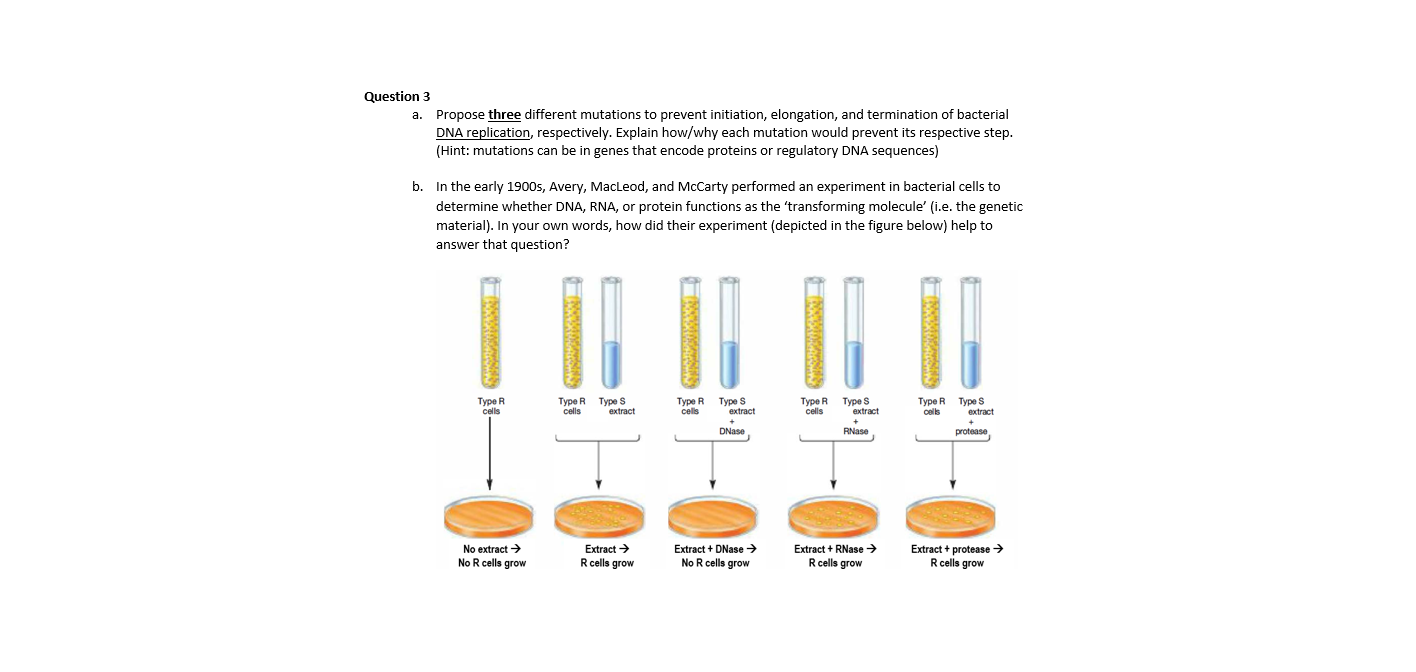a. Propose three different mutations to prevent initiation, elongation, and termination of bacterial DNA replication, respectively. Explain how/why each mutation would prevent its respective step. (Hint: mutations can be in genes that encode proteins or regulatory DNA sequences) b. In the early 1900s, Avery, MacLeod, and McCarty performed an experiment in bacterial cells to determine whether DNA, RNA, or protein functions as the 'transforming molecule' (i.e. the genetic material). In your own words, how did their experiment (depicted in the figure below) help to answer that question?
Genetic Recombination
Recombination is crucial to this process because it allows genes to be reassorted into diverse combinations. Genetic recombination is the process of combining genetic components from two different origins into a single unit. In prokaryotes, genetic recombination takes place by the unilateral transfer of deoxyribonucleic acid. It includes transduction, transformation, and conjugation. The genetic exchange occurring between homologous deoxyribonucleic acid sequences (DNA) from two different sources is termed general recombination. For this to happen, an identical sequence of the two recombining molecules is required. The process of genetic exchange which occurs in eukaryotes during sexual reproduction such as meiosis is an example of this type of genetic recombination.
Microbial Genetics
Genes are the functional units of heredity. They transfer characteristic information from parents to the offspring.

Trending now
This is a popular solution!
Step by step
Solved in 2 steps


